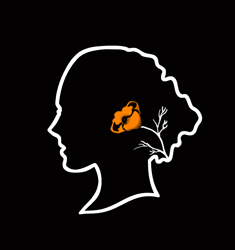Elizabeth Poett, oil on canvas, 24x32 by Holli Harmon
Not Just a Cowboy: Female Ranchers and Fresh Food
Grade: 2nd Grade
Subjects: People who make a difference, California History, Fresh Food
Class Sessions: 1 to 2
Lesson Summary: The CCSS Second Grade history standards explain the following ”Students in grade two explore the lives of real people who make a difference in their everyday lives and learn the stories of extraordinary people from history whose achievements have touched them, directly or indirectly. The study of contemporary people who supply goods and services aids in understanding the complex interdependence in our free-market system.”
Elizabeth Poet is a fifth Generation De La Guerra from the land grant days when California was owned by Mexico. She is a perfect example of a present historical figure with an applicable past. Her contributions to organic farming are an excellent way for students to learn about the contributions she has made to the market system. In addition, Elizabeth’s life as a rancher will give students a unique view of how other people live and also show them where their food comes from. The lesson plan steps below are meant to be a guideline. Adapt the lesson principles in whatever will best fit your student’s needs.
Lesson Objectives:
Tracing the history of a family through Poett’s family history tied to Jose De La Guerra
Compare and contrast ranch life to the student’s lives
Learn about grass-fed raised beef vs. corn-fed beef
Talk about how buyers influence the way beef is raised
Talk about why so many cows are not raised the way Rancho San Julian raises them: scarce land, water, ranch hands etc.
Resources:
- Portrait of Elizabeth Poett by Holli Harmon
Pictures of Cows (cow puppet)
Pictures of beef/materials to demonstrate a farmer’s market
Any resources you want to use to set up compare and contrast
Lesson Plan:
Ask students: “Where do you live?” “Do you live in a house, apartment, duplex, etc?” “What do you parents do? Plumbing, nursing, teaching, public office etc.”
Put some of student’s examples on the board in cutouts or have models
Talk about how in history people lived in different dwellings: what happened around people’s houses? “Lived with animals” ‘Farms” “Castles” “Banks”
Introduce the portrait of Elizabeth Poett
See. Think. Wonder.
Have magnetic cards of Poett’s family history and help students create a document to finish at home of their own family history.
Class Session 2
Ranch Life vs. the student’s lives. Draw differences
Students create their own pictures of home, perhaps a diorama
Talk about how Elizabeth is an important part of the food supply chain
Compare and Contrast Industrial raised cows vs. grass fed cows
Use blocks or a felt board or some kind of outdoor activity to talk about scarce resources
Set up a class market with both responsible farm raised food and industrial raised food
Assessment:
See Standards below
Willingness to participate
Ability to compare and contrast
Drawing/diorama activity
Standards Addressed:
CCSS History 2nd Grade
2.1 Students differentiate between things that happened long ago and things that happened yesterday.
1. Trace the history of a family through the use of primary and secondary sources, including artifacts, photographs, interviews, and documents.
2. Compare and contrast their daily lives with those of their parents, grandparents, and/or guardians. 3. Place important events in their lives in the order in which they occurred (e.g., on a time-line or storyboard).
2.4 Students understand basic economic concepts and their individual roles in the economy and demonstrate basic economic reasoning skills.
1. Describe food production and consumption long ago and today, including the roles of farmers, processors, distributors, weather, and land and water resources.
2. Understand the role and interdependence of buyers (consumers) and sellers (producers) of goods and services.
3. Understand how limits on resources affect production and consumption (what to produce and what to consume).
Created By Katherine Kwong Intern 2016

